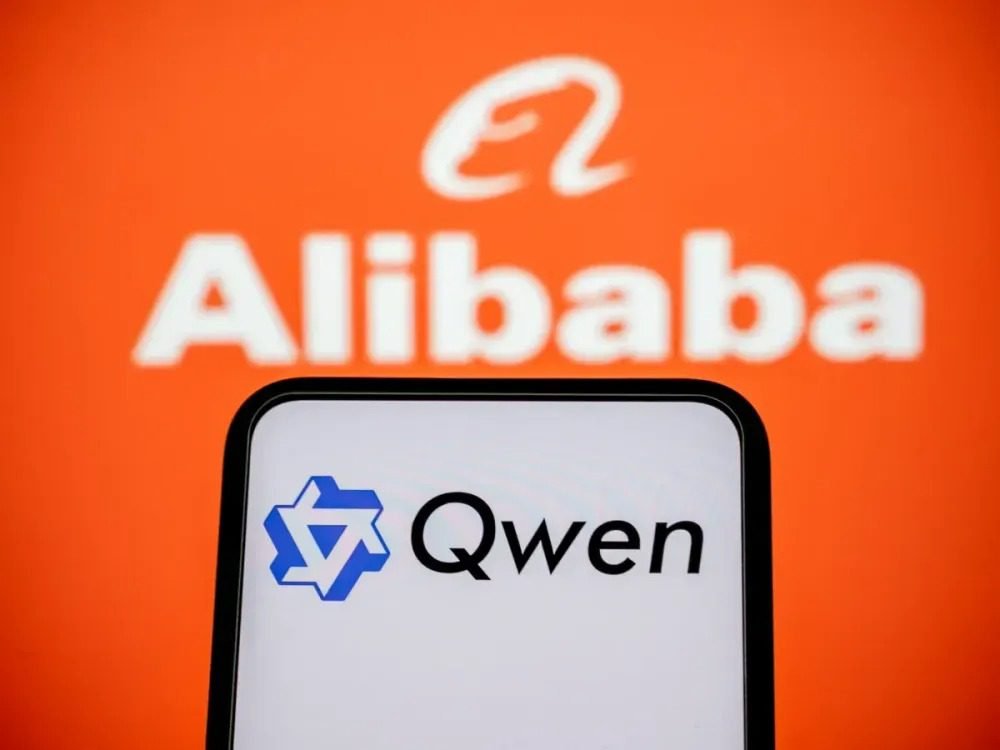Alibaba’s revolutionary Qwen3-Max AI system emerges with 1 trillion parameters, fundamentally transforming how developers approach code generation and autonomous agent capabilities. This powerful breakthrough demonstrates exceptional results across multiple benchmarks, positioning itself as a formidable competitor to established models like ChatGPT and Claude Opus 4.
The model processes vast amounts of data through massive pre-training, enabling robust pattern recognition while supporting 100 languages for expanding global use. Qwen3-Max handles complex agentic tasks with fewer human prompts, making decisions and taking action independently toward any specified goal set by the human user.
Technical Specifications and Model Details
The architecture of this powerful system leverages 1 trillion parameters to achieve superior performance. Advanced deployment frameworks like vLLM and SGLang facilitate efficient serving across multiple GPUs. The infrastructure demands substantial compute resources for optimal operations.
Hardware requirements include high-end setups for local running, though cloud access mitigates these demands. The system processes information through sophisticated variables that determine core functionality. Tensor parallelism supports heavy mode deployment across distributed environments.
Technical Specifications
| Specification | Details |
| Parameters | 1 trillion parameters |
| Training Data | 36 trillion tokens (double of Qwen2.5) |
| Context Window | 262,144 tokens |
| Maximum Input | 258,048 tokens |
| Maximum Output | 65,536 tokens |
| Language Support | 100 languages |
| Model Type | Large Language Model with autonomous agent capabilities |
| API Compatibility | OpenAI-compatible APIs |
Key Capabilities & Features
| Category | Features |
| Core Strengths | Code generation, autonomous agent capabilities, complex reasoning |
| Advanced Features | Agentic tasks, explicit thinking modes, context caching |
| Language Processing | Multilingual support (100 languages), reduced hallucinations |
| Integration | OpenAI-compatible function calling, tool use capabilities |
| Deployment | vLLM, SGLang frameworks, tensor parallelism support |
Performance and Benchmarks
The Qwen3-Max demonstrates remarkable strength across diverse benchmarks, with competitive results that outscores established models like GPT-5 and DeepSeek-V3.1. Trained on 36 trillion tokens, this flagship model excels at complex tasks including frontend development, Java conversions, and Python improvements with higher scores than predecessors. The trillion-parameter scale provides significant edge in long-tail knowledge coverage, while perfect scores in math and general capabilities position it among top models globally.
Performance testing reveals stronger results in instruction-following and tool use scenarios, with reduced hallucinations ensuring reliability across real-world applications. The model’s agentic skills and deep thinking capabilities achieve modest yet competitive standings on SWE-Bench, demonstrating its potential to match or exceed premium alternatives like Claude’s reasoning modes. Community feedback from platforms like Reddit consistently highlights the model’s ability to handle multi-step processes and structured thinking with enhanced accuracy.
| Benchmark | Qwen3-Max Score | Claude Opus 4 | DeepSeek-V3.1 | Notes |
| SuperGPQA | 65.1 | 56.5 | 43.9 | General reasoning test |
| AIME25 | 81.6 | – | – | Advanced mathematics |
| LiveCodeBench v6 | 74.8 | 52.3 (Non-thinking) | – | Coding evaluation |
| Tau2-Bench Verified | 69.6 | – | – | Technical reasoning |
| SWE-Bench Verified | 72.5 | – | – | Real-world coding challenges |
Company Strategy and Investment

Alibaba’s strategic positioning in the AI landscape demonstrates a calculated investment approach where infrastructure and pricing models directly support long-term market penetration. The tiered structure with competitive rates undercutting premium options from OpenAI and Anthropic reflects deliberate resource allocation aimed at capturing enterprise market share while maintaining scalability through cloud deployment.
Innovation budgets prioritize hybrid open and closed-source strengths, enabling teams to harness both accessibility and proprietary capabilities. This evolving strategy positions Alibaba to compete directly with industry leaders through cost-effective solutions that enhance productivity across diverse scenarios including software development, education, and enterprise automation tools.
| Aspect | Details | Aspect |
| Total Investment | $53.40 billion (380 billion yuan) over 3 years | Total Investment |
| Focus Areas | AI infrastructure, core business integration | Focus Areas |
| Strategic Priority | AI over traditional e-commerce operations | Strategic Priority |
| Market Position | Competing with top-tier AI models globally | Market Position |
| Development Approach | Relentless compute scaling, massive pre-training data | Development Approach |
API Access and Pricing
Pricing-wise, Alibaba’s Qwen3-Max proves remarkably competitive through Cloud’s endpoints, offering advantages in certain scenarios. The API calls leverage standard libraries with straightforward integration, enabling developers to call sophisticated prompts seamlessly. Organizations can apply efficient serving methods while handling large token volumes effectively.
OpenRouter and Vercel AI Gateway expand options for providers, facilitating switching between different ecosystems. Apidog plays a crucial role in providing intuitive platform management, allowing teams to simulate requests, monitor responses, and debug integrations. The tool’s features include request chaining and environment variables to streamline workflows.
Key API Features:
- Fast responses suit real-time apps with low latency
- Function calling capabilities for multi-step processes
- Long context support aids comprehensive document analysis
- Maximum input: 258,048 tokens
- Maximum output: 65,536 tokens
- Context window: 262,144 tokens
API Pricing Structure
| Token Range | Input Cost (per million) | Output Cost (per million) |
| 0-32K tokens | $1.2 | $6.0 |
| 32K-128K tokens | $2.4 | $12.0 |
| 128K-252K tokens | $3.0 | $15.0 |
| New User Bonus | 1 million free tokens (90-day validity) | – |
Competitive Comparison
| Model | Strengths | Key Differentiators |
| Qwen3-Max | Coding, mathematics, agentic tasks | 1T parameters, cost-effective pricing |
| Claude Opus 4 | General reasoning | Established reasoning modes |
| GPT-5 Pro | General AI tasks | Market leader position |
| DeepSeek-V3.1 | Technical tasks | Open-source alternative |
| Gemini-2.5-Pro | Multimodal capabilities | Google ecosystem integration |
Model Variants & Ecosystem

Qwen3-Max emerges alongside several complementary variants designed for diverse applications. The Max variant operates through enhanced multilingual capabilities while Qwen-Agent tool calling features enable sophisticated integrations with external platforms. Enterprise users can leverage context caching for repetitive tasks, ensuring efficient monitoring across production environments. Creative industries employ these models for content generation, delivering quality outputs through personalized recommendations based on user contexts.
Open-weight models share collections of specs and documentation, allowing developers to download and import free resources for software development projects. Scientists explore the reasoning potential through hypothesis testing and simulations, while healthcare applications power ethical decision support pipelines. Global learning platforms deliver educational content in native languages, with tutors explaining complex concepts through high accuracy instruction following. E-commerce platforms process user histories to generate responses that adapt to future thinking patterns.
| Component | Description |
| Qwen3-Max | Flagship trillion-parameter model |
| Qwen3-235B-A22B | Open-weight alternative (70.3 on AIME25) |
| Qwen3-Omni | Multimodal system for AR/VR applications |
| Qwen-Agent | Tool calling and multi-step process handling |
| API Tools | Apidog for testing, OpenRouter/Vercel integration |
Ecosystem Tools & Integration
| Tool Category | Primary Function | Key Benefits |
| APIs | OpenAI-compatible migration | Reduces setup complexity |
| Agent Framework | Tool use coordination | Automate pull requests |
| Caching System | Repeated queries optimization | Stable cost management |
• Debugging and refactor legacy code through intelligent assistance
• Monitor integrations with collaboration features
• Classification tasks rivaling Gemini-2.5-Pro and Grok-3
Frequently Asked Questions (FAQs)
What is Alibaba’s AI model called?
Alibaba’s AI model series is called Tongyi Qianwen (Qwen).
Is Alibaba Qwen AI free?
Yes — Qwen Chat is offered for free to public users.
How does Alibaba use artificial intelligence?
Alibaba uses AI for e-commerce search & recommendation, logistics optimization, language translation, and intelligent customer service chatbots.
What is the new AI tool on Alibaba?
The latest major AI tool is Qwen3-Max, a model with over 1 trillion parameters.
What are the 4 models of AI?
The four functional types are Reactive Machines, Limited Memory, Theory of Mind, and Self-Aware.
Read More Tech Related Blogs Here:
iOS 26 Update: Features, Compatibility, Battery, Performance
Five Tips Turning Your Saree Selfie into Bollywood Poster Vibes
Google Nano Banana AI: Create 3D Figurines Easily
Conclusion
Qwen3-Max represents more than technological advancement—it’s Alibaba’s bold statement that Chinese AI leadership isn’t just potential anymore. The model’s benchmark dominance across coding, mathematics, and reasoning tasks demonstrates how strategic investment in foundation models transforms competitive landscapes. Engineers and researchers now access tools that exceed traditional limitations, enabling creative problem-solving at unprecedented scales.
The API’s pricing structure and OpenAI-compatible integration ensures developers can adopt these capabilities today without extensive migration efforts. Enhanced multilingual support and reasoning enhancements promise greater innovations beyond current applications, positioning organizations to stay competitive in an AI landscape where trillion-parameter models refine how we approach complex challenges. Alibaba’s vision operates on immense computational power that transforms artificial intelligence from experimental technology to essential business infrastructure.
Fatima Khan is a seasoned technology journalist with 6+ years of experience covering consumer electronics, mobile devices, laptops, and emerging technology trends. Specializes in comprehensive smartphone reviews, laptop performance testing, gaming hardware analysis, and consumer electronics evaluation. Has extensively covered flagship phone launches, budget laptop comparisons, wearable technology, smart home devices, and audio equipment reviews.
Additionally covers software development trends, programming languages, coding tutorials, app reviews, and developer tools. Provides insights on software updates, mobile app testing, development frameworks, and tech industry analysis for both consumers and developers.




